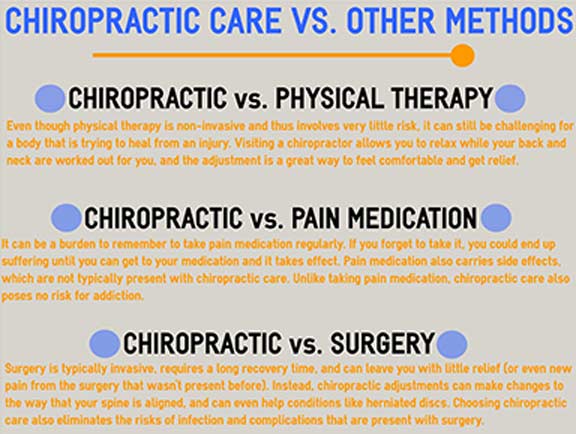The Impact Of Pose On Pain In The Back: Methods For Sustaining Correct Alignment During Daily Activities
The Impact Of Pose On Pain In The Back: Methods For Sustaining Correct Alignment During Daily Activities
Blog Article
https://personal-care-chiropracti84951.blogproducer.com/38890104/a-newbie-s-guide-to-recognizing-cervical-spinal-column-composition-and-its-influence-on-neck-pain -Fletcher Bennett
Maintaining correct stance isn't nearly staying up directly; it has to do with aligning your body in such a way that supports your spine and lowers the threat of pain in the back. The means you sit, stand, and relocate throughout the day can considerably affect your spine wellness. Yet just how specifically can you make certain good alignment regularly, even during active days filled with various tasks? Let's dig deeper into the refined yet impactful adjustments you can make to your day-to-day regimen to keep your back satisfied and healthy.
Relevance of Appropriate Posture
Correct posture is important in maintaining a healthy back and protecting against discomfort. When you rest or stand with good posture, your spine is in alignment, lowering pressure on your muscle mass, ligaments, and joints. This placement permits the body to distribute weight equally, preventing excessive stress on particular areas that can cause pain and discomfort. By keeping your back correctly aligned, you can likewise enhance your breathing and food digestion, as slouching can press body organs and restrict their performance.
Moreover, preserving good pose can enhance your general look and confidence. When just click the next article stand tall with your shoulders back and head held high, you exhibit self-confidence and appear more approachable. Great pose can additionally make you feel much more stimulated and sharp, as it advertises appropriate blood circulation and permits your muscle mass to function efficiently.
Incorporating correct pose right into your everyday routine, whether resting at a workdesk, strolling, or working out, is necessary for avoiding neck and back pain and promoting overall wellness. Bear in mind, a little change in how you hold on your own can make a substantial difference in how you feel and work throughout the day.
Common Postural Mistakes
When it concerns keeping excellent position, many individuals unwittingly make common mistakes that can contribute to back pain and pain. One of one of the most widespread errors is slumping over or hunching over while resting or standing. This setting places extreme stress on the spine and can result in muscle mass discrepancies and discomfort in the long run.
An additional typical error is overarching the reduced back, which can squash the all-natural curve of the spine and create pain. In addition, crossing legs while sitting may feel comfy, yet it can produce an inequality in the hips and pelvis, causing postural issues.
Using a pillow that's too soft or too solid while sleeping can also influence your positioning and contribute to pain in the back. Last but not least, frequently craning your neck to look at screens or adjusting your position often can stress the neck and shoulders. Bearing in mind these typical postural mistakes can help you keep far better placement and lower the risk of neck and back pain.
Tips for Correcting Placement
To boost your placement and decrease pain in the back, it's important to focus on making small modifications throughout your everyday regimen. Beginning by bearing in mind your posture. When sitting, ensure your feet are flat on the floor, your back is straight, and your shoulders are unwinded. Prevent slouching or leaning to one side. Usage ergonomic chairs or pillows to support your lower back.
When standing, distribute your weight equally on both feet, keep your knees a little curved, and tuck in your pelvis. Involve your core muscle mass to support your spinal column. Take breaks to extend and walk if you have a less active work. Include workouts that reinforce your core and back muscles, such as planks or bridges.
While resting, use a cushion that sustains the natural curve of your neck to preserve appropriate spine placement. Avoid sleeping on your stomach, as it can stress your neck and back. By being mindful of these tips and making small adjustments, you can gradually fix your alignment and minimize pain in the back.
Final thought
Bear in mind, maintaining excellent posture is crucial to preventing neck and back pain and promoting spine health and wellness. By bearing in mind your positioning, dispersing weight uniformly, and engaging your core muscle mass, you can reduce stress on your back and minimize the danger of discomfort and injury. Include visit this website , take routine breaks to extend, and strengthen your core and back muscles to keep proper placement throughout the day. Your back will certainly thanks for it!
